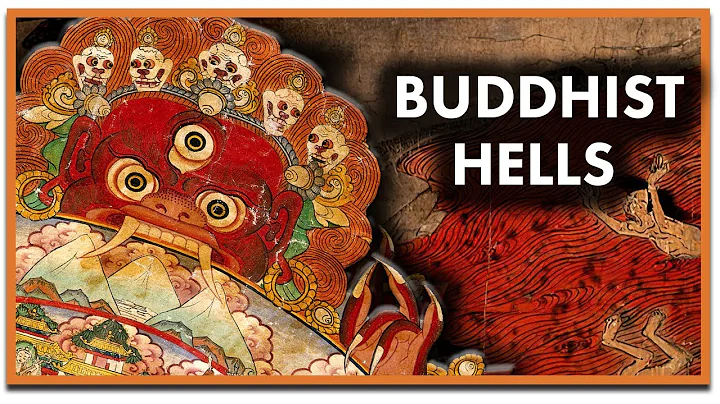Chinese culture has a long history. After Buddhism was introduced to China, it was compatible with Chinese culture. Especially now, there are three major sects that are still circulating in the world, two of which originated from China, Han Buddhism and Tibetan Buddhism.
At the same time, because Buddhism has a long history based on Chinese civilization, many of our history, culture, economy, politics, and even daily life are closely related to Buddhism. Many friends like to travel, and in addition to landscape, water and humanities, they may be more religious temples. It is a pleasure to learn some simple Buddhist knowledge and add some interest to life.

In fact, many people know a little about Buddhism, but more people are actually curious. There seems to be no difference in so many gods and Bodhisattvas. The murals on the walls do not know what they express. The temples they see seem to be similar, and they are different. How do we distinguish between Buddhas and Bodhisattvas, and how do we know which sect it is?
sect distinction, we must first divide the Southern Buddhism, the Chinese Buddhism and the Tibetan Buddhism, and we also need to briefly introduce the views and theories of these three major sects. First, look at the Southern Buddhism, also called Hinayana Buddhism . Among the sutras of the practice of Theravada Buddhism, the "Agama Sutra" is the first to be recommended. If any friends are interested, they may find that the "Agama Sutra" does not mention Bodhisattvas, gods and ghosts, but simply explains the principles and requirements for practice. These are also important core views of Theravada Buddhism. Theravada Buddhism has retained the true nature of Buddhism at the beginning of its creation, and talks about self-consciousness and the Qing Dynasty's precepts. It does not recognize that there are other enlightened people besides Sakyamuni. Therefore, if you have been to Myanmar, Thailand, or Xishuangbanna in Yunnan, and friends who have visited the Theravada Buddhist temples will know that the architecture of the Theravada Buddhist temple is relatively simple, the older the temple, the simpler the temple. Moreover, the only statues inside are Sakyamuni Buddha, there may be eight groups, representing the eight forms of Sakyamuni Buddha from Monday to Sunday. Among them, Wednesday is busy, and it is divided into two types. This is similar to the eight pagodas of Tibetan Buddhism, and it also represents the eight nodes in the life of Sakyamuni's enlightenment and teaching the Dharma from birth to death.

The Buddha statues of the Southern Buddhism have a relatively distinctive shape, with thin body shape and slender hands and feet, similar to those of tropical residents. They wear cassocks, occasionally begging, and have no extra decorations, which is more consistent with the rules and regulations of Theravada Buddhism that still adhere to the rules and regulations such as not eating after noon.
As for the name of Hinayana Buddhism, it is actually a hundred years after Sakyamuni passed away. The disciples disagree with their opinions. They advocated that they should be both self-conscious and aware of their own, and label themselves as "Mahayana Buddhism" and the other school called "Haiwana Buddhism". This title has a certain derogatory meaning, so when you go to the south or Thailand, Myanmar, Nepal, you must not mention Hinayana Mahayana to believers there. It can also be seen from this that Buddhism says not to greed, anger, and ignorance, but no one is happy to say that anyone is not good. After all, Buddhist disciples have not yet become Buddhas and are truly free from joy, anger, sorrow, and happiness.

Let’s look at our most widely circulated Chinese Buddhism. Chinese Buddhism is Mahayana Buddhism. It is precisely because of the lack of self-consciousness and the Mahayana disciples who have to preach the Dharma and have worked hard to preach Buddhism to China. Since , the Southern and Northern Dynasties, has flourished, and has reached its peak by , the Tang Dynasty, , the national strength has been used to reach its peak. It is precisely because Mahayana Buddhism is voluntarily integrated into the environment and obeys the secular world, so it is easy to spread, both the regime and the people are easy to accept, and the scope of missionary preaching is wider. The construction of the system of gods and ghosts such as Buddha, Bodhisattva, Arhats and other gods is because in the process of integration, the content of Chinese Confucianism, Taoist is combined with folk interpretation, so the system is huge and the content is complex.
is divided into religious status. Naturally, the highest level is Buddha. However, in addition to Sakyamuni Buddha, Chinese Buddhism has more Buddhist disciplines. This is because Mahayana Buddhism believes that everyone can become a Buddha, but the road is difficult and cannot be completed in this life. In order to become a Buddha, you have to work hard, go through hardships, and continue to practice. Before becoming a Buddha, you have to go through reincarnation, Arhat , and Bodhisattvas, and upgrade layer by layer, just like we are elementary school, high school, graduate student, and finally postdoctoral fellow. This view is to open a door full of hope for ordinary people, and to maintain the mystery and strict level of religion, which is an excellent ideological height and means.
Therefore, there are many statues in Chinese Buddhism, and it is more difficult to recognize than the Southern Buddhism. We don’t have to master it too much. We choose to know more about the popularization rate, which is enough for us to watch it every day. First of all, we can distinguish it from the Buddha's statues. Most Buddha statues are almost the same and are difficult to distinguish. The most common one is , the three-generation Buddhas , and the three-generation Buddhas are divided into horizontal three-generation and vertical three-generation. The horizontal here refers to direction, east, middle and west, and vertical refers to time, past, present, and future. Heng three-time Buddha is in charge of the East, the Tathagata Buddha in charge of the Middle Land, which is Sakyamuni Buddha, also known as Virusana Buddha , and Amitabha Buddha in charge of the West. Because the West is where we will all go in the future, it is Previous World , so the Chinese Buddhist propaganda of the Buddha's name is not chanting "Sakamuni", but chanting "Amitabha Buddha". Medicine Buddha is in charge of health. If there is color, it is blue and usually holds a pagoda in his hand. Shakyamuni Buddha is a yellow race, empty-handed or begging for the sake of the Journey to the West, which is the bowl used to beg for alms by Wukong. The Western Amitabha Buddha is red, and the lotus lamp is usually in his hand. If there is nothing in the Buddha statue, it is distinguished by hand seals. The maharaja is even more popular in Tibetan Buddhism. You don’t have to remember it, you can follow the direction. That is, when we face the hall, the one facing the middle is Tathagata Buddha Sakyamuni, the one on the right is Medicine Buddha, and the one on the left is Amitabha Buddha.

1Herical Buddha is the Ranning Ding Ancient Buddha of the past world, the Tathagata Buddha in the present world and the Maitreya Buddha of the future world, generally, we should distinguish from the handprints. In the future, we will tell you about the handprints separately, and now we will first divide from the direction. Facing the hall, the Tathagata Buddha in the middle is the Tathagata Buddha, the Tathagata Buddha in the left hand is the Ancient Buddha in the right hand, and the Maitreya Buddha in the right hand is.

There are also halls that only worship one Buddha, and most of them are Tathagata Buddhas, and there are also those who worship Maitreya Buddhas alone. The simplest way to distinguish is that there are usually two venerables at the feet of Tathagata Buddhas. These two people play an indispensable role in the Buddhist tradition: Ananda and Kasyapa . When we face the left side, we are usually Ananda, with clear eyebrows and beautiful eyes, young and strong eyes, and Kasyapa on the right side, with a sad face, old and thin, all wearing a cassock. As long as there are these two, the one in the middle must be Sakyamuni Buddha.

The others are Five Buddhas , Seven Buddhas , etc. The Five Buddhas are in addition to the three east, middle and west, and the southern treasure Buddhas and the northern non-empty Buddhas. The seven Buddhas are relatively rare, and are the seven-life Buddhas before Sakyamuni. The statues of Chinese Buddhism usually have a plump body, a compassionate face, a wide robes, and some of them have ten thousand words in their hearts.








![[English] Who Am I - Lecture 1 - Ven. Guan Cheng - DayDayNews](https://i.ytimg.com/vi/KU0fUs2It5o/hq720.jpg?sqp=-oaymwEcCNAFEJQDSFXyq4qpAw4IARUAAIhCGAFwAcABBg==&rs=AOn4CLDFpQUN_QwRfC7bmP4sUadq-RcYdg)
![A Moving Masterpiece 清明上河图 [English narration] - DayDayNews](https://i.ytimg.com/vi/kxff-4GktOI/hqdefault.jpg?sqp=-oaymwEcCOADEI4CSFXyq4qpAw4IARUAAIhCGAFwAcABBg==&rs=AOn4CLBtHGLeUpJNCYDJYnZTuISQ1N5Vag)


